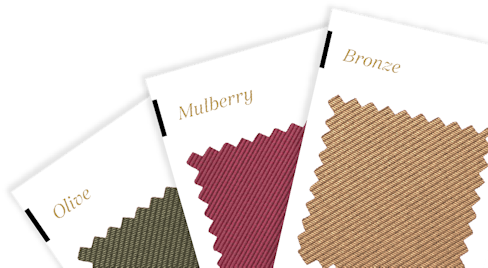What’s the Difference Between Black Tie & Formal Attire?

Just got engaged? Check out our new Groom's Guide!
If you receive an invitation to a fancy event, the invitation may likely specify a formal or black tie dress code. This can cause a little confusion, as many people aren’t au fait with the specific difference between formal vs. black tie.
In brief, formal attire is more of a general term, encompassing a wide range of outfit options. Black tie, meanwhile, is more specific, referring to black tuxedos with black bowties and classic white shirts. This guide will go into deeper detail, explaining exactly the difference between black tie and formal wear.
Understanding Dress Codes: The Basics
From black tie to white tie dress code, there are many rules and standards around what people should or should not wear to certain events. Before we take a deeper look into the key differences separating black tie and formal wear, it’s important to understand the unique intricacies and purposes of dress codes.
The Essence of Dress Codes
The concept of dress codes goes back centuries. People have always appreciated the idea of dressing up in certain ways for specific events. The idea has been passed down through the ages and still holds a special role in modern society.
Whether it’s a wedding, funeral, grand gala, or some other special occasion, dress codes will often be enforced. They add to the occasion, making it look and feel more special and memorable, while also setting clear standards and rules for the guests to abide by.
Why Dress Codes Matter
Apart from giving events that uniquely special feeling, dress codes help establish a certain respect or reverence for the event in question. A wedding, for example, is a wonderful and magical occasion for those involved, and deserves to be treated as such.
By having guests dress up in beautiful or formal clothing, weddings and parties can instantly become more elegant, sophisticated, and remarkable. The whole venue or space takes on a new aura, and the very presence of so many suits, ties, dresses, and gowns can elevate the simplest events to a more special and significant status.
Dress codes also help to set the tone of an event, with formal attire helping to establish a smart, respectful vibe. They also provide instructions and guidance for those who are unsure what to wear, as noted by Stanford Law School professor Richard Thompson Ford in The Cut:
“In the past, everyone might have known what to wear to a wedding... But now there are no norms, and you need to be told.”
Dissecting Formal Attire
Next, let’s take a deep dive into formal attire to see what exactly this term refers to and what makes up an authentic formal outfit.
Definition of Formal Attire
Formal wear or attire is a dress code commonly used for weddings, funerals, dinners, balls, and similar events.
For Men
For men, a typical formal outfit may include smart suits, dress shirts, ties, and dress shoes. A range of accessories may also be added to the ensemble, like a pocket square or set of cufflinks. Typically, dark colors are favored, like charcoal or navy suit jackets. However, other shades and tones may be used, provided the overall outfit meets the standard formal requirements.
For Women
For women, a standard formal outfit would consist of a dress. Both floor-length gowns and lighter cocktail dresses can fall into the formal category. Aside from dresses, blouses, dressy skirts, and dress pants are potential choices for females at formal events. In terms of footwear, heels or fancy flats may be worn, while accessories can include elegant jewelry and small clutch bags.
Variations in Formal Attire
There are various subcategories of formal dress, like business formal or wedding formal. Each variety can have distinctive characteristics. For example, a “business formal” event would typically require both men and women to wear suits of dark, simple colors. Meanwhile, “wedding formal” would focus more on dresses for women and a wider color palette.
Diving Into Black Tie
Let’s see what makes black tie a distinct and different concept from formal attire.
Definition of Black Tie
Black tie is a very specific dress code, often reserved for the most formal of occasions. It’s often employed at fancy and formal weddings, galas, dinners, proms, and balls. The history of black tie goes all the way back to the Regency period.
For Men
For men, the black tie dress code is quite clear and strict: outfits should consist of tuxedos with black bow ties, white shirts, and black dress shoes. Black is the most common color for a tuxedo jacket, although midnight blue is emerging as a modern alternative. In addition, as bridal stylist Jackie Avrumson explains in Martha Stewart:
“A tuxedo doesn’t necessarily have to be black… We are now seeing the groom in navy, maroon, green, and patterned tuxedo jackets, and they are being re-worn at their friends’ black-tie weddings.”
For Women
For women, black tie has a little more versatility. Ladies may choose to wear various evening gowns or fancy cocktail dresses at a black tie gathering, although longer and more formal gowns tend to be favored. High heels are the typical footwear of choice, with fine jewelry, shawls, and clutches as accessories.
The Black-Tie Optional Conundrum
Some event invites specify a black-tie optional dress code, which can be confusing. The term can have various interpretations, but is generally accepted to mean that tuxedos are preferred, but not mandatory. Formal suits are accepted, but darker colors are still the norm.
Side-by-Side Comparison: Formal vs. Black Tie
Now, let’s see how formal vs black tie compare side-by-side.
Men’s Attire
For men, black tie means renting a tux or buying one. This dress code demands smart black jackets and bow ties, while a formal event gives you more freedom to wear a nice suit in a wider range of colors.
Women’s Attire
For women, black tie and formal aren’t too different, but longer and fancier gowns, along with high heels, are preferred for black tie. At formal events, it’s easier to get away with a cute cocktail dress and dress flats.
Level of Formality
Black tie is the more formal of the two. Formal wear still needs to be smart and elegant, but doesn’t have the same strict standards as black tie.
Common Scenarios and What to Wear
Black tie and formal dress codes can apply to a range of events. Here are some examples, and guidance on what to wear for each one.
Weddings
When dressing up for weddings, many people worry, asking questions like, “Do I need to wear a tie to a wedding?” In general, it’s important to pay close attention to the invite. If it says “black tie,” that means tuxedos and elegant dresses with appropriate ties only, so cocktail attire for men at a wedding won’t be suitable.
If it says formal, men can feel free to wear suits and women can opt for shorter cocktail dresses. If it has some other variation, which is quite common nowadays, like “festive formal” or “semi-formal,” you may have to consult with the bride, groom, or fellow guests for more details.
Formal Dinners vs. Black Tie Events
Formal dinners generally only require men to wear smart suits and women to wear dresses or other smart attire. Black-tie events, meanwhile, are stricter, with expectations of tuxedos and floor-length gowns.
Formal and Black Tie Footwear
When comparing formal vs black-tie footwear, there are a few key similarities. For example, men should wear sleek, classic styles that are well-fitting and comfortable. For a black tie or formal event, you can never go wrong wearing patent leather or black dress shoes.
Essential Accessories for Black Tie & Formal
When it comes to accessories, there’s not much difference between black tie and formal events. In both cases, the goal is to add some sophisticated touches to your outfit. Complete your refined look by adding cufflinks and studs, and a black bow tie to your tuxedo rental. You can always add a touch of refinement by adding a white satin twill pocket square.
Parties and Galas
For parties and galas, the nature of the occasion and style of the venue can impact the dress code. Grand balls and charity galas, for example, will usually have higher expectations of tuxedos and black-tie attire. Meanwhile, more casual parties should have a softer, more relaxed dress code demands.
Common Mistakes to Avoid When Dressing for a Formal vs. Black-Tie Event
Figuring out what to wear for a specific event can be confusing, which is why many of us make common mistakes when dressing for a formal vs. black-tie event. To avoid this, it's important to read the invitation carefully. The most common mistake is underdressing for a black tie event and overdressing for a formal event. Keep on the safe side and wear a tuxedo and a bow tie for a black tie event. And when it comes to formal vs black tie events, always make sure to wear a properly fitting suit or tuxedo.
FAQs and Common Misconceptions
Is a tie required for a black-tie event?
Yes. The traditional and acceptable look for a black tie event is to wear a black bow tie with a black tuxedo. However, if the black tie event is slightly less formal, some hosts may be okay with you wearing a black suit with a classic necktie. If you’re unsure, always check with the host.
What’s the difference between ‘Formal’ and ‘Black Tie’ attire?
Is formal the same as black tie? The difference between black tie and formal comes down to specificity. When you’re invited to a black tie event, the dress code is strict. Men should wear a black tuxedo and bow tie, while women should wear a formal cocktail dress or floor-length evening gown.
When it’s a formal event, you’ll still want to dress to impress, but there is a bit more flexibility in what you can wear. Men should wear a well-fitting black, charcoal, or navy-colored suit with a crisp white dress shirt and a necktie or bow tie. Women can attend a formal event wearing a cocktail dress, a dressy skirt with a blouse, an elegant gown, or dress pants.
What does "Black Tie Optional" mean?
When an invitation says "black tie optional," it means you have more flexibility in your outfit choice. While you're still expected to dress elegantly and look sophisticated, you’re not required to wear traditional black tie attire. You can choose between formal options like a tuxedo or a dark suit, giving you the freedom to adjust based on your personal style.
Are there color restrictions for each attire?
There are some guidelines, but not strict restrictions. For black tie events, black is the classic choice, though darker shades like navy are also acceptable. For formal events, the color options are more flexible, but darker tones are generally a safe and stylish choice.
Can I wear a regular suit to a black tie event?
It’s not recommended to wear a standard suit to a black tie wedding or other event. The term “black tie” specifically refers to tuxedos, and hosts may be disappointed to see guests attend in any other kind of formal attire. You can, however, wear a suit if the dress code is listed as “black tie optional.”
Conclusion
Even though they may seem similar at first glance, formal and black tie dress codes clearly have their own distinctive features and nuances. It’s vital to understand those differences, following the rules and traditions of each dress code as a sign of respect for the nature of the event in question.

Roshana Pourvakil
Roshana Pourvakil has been with Generation Tux since 2022, combining expertise in weddings, formalwear, and fashion with a passion for impactful marketing. She values the transformative power of suits and tuxedos, blending timeless sophistication with modern style. Her work includes leading campaigns and creating narratives that inspire unforgettable wedding moments.
Link to bio pageFeatured Products
Get started.
Stylish suits and tuxedos delivered straight to your door. See our collection and rent now.

